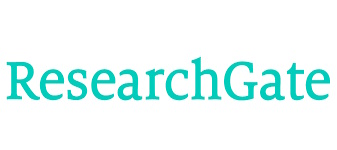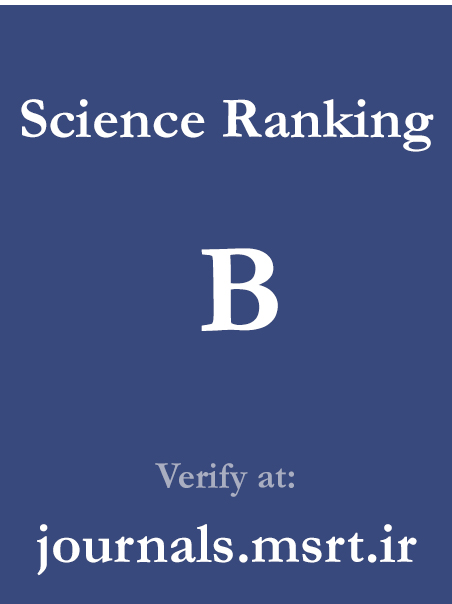Evaluating the Efficiency of Explainable Artificial Intelligence Methods in Determining the Importance of Variables in Predictive Models
Keywords:
Explainable Artificial Intelligence, SHAP, Machine Learning, Debt Recovery, Default Prediction, Credit Risk Management.Abstract
The prediction of non-performing loan recovery is one of the main challenges in the banking system. Delays in the timely repayment of loans increase credit risk for banks and undermine their financial health. This study aims to design an accurate, interpretable, and AI-based model to assess the importance of variables influencing the prediction of receivables collection over a 30 to 90-day period. The research methodology is analytical-applied in nature. Real credit and banking data from 750,000 individual customers were utilized, and advanced machine learning algorithms (such as Random Forest and XGBoost), along with explainable artificial intelligence (XAI) methods such as SHAP and LIME, were employed. The results indicated that the algorithms were able to predict delinquent contracts with high accuracy, and SHAP successfully identified variables such as the number of negative months and the average overdue debt in the last three months as the most influential features. The use of explainable artificial intelligence not only preserves the accuracy of predictive models but also enables banking analysts to make decisions based on transparent data interpretation—an element directly contributing to the enhancement of risk management strategies.
Downloads
References
Abdesslem, R. B., Chkir, I., & Dabbou, H. (2022). Is managerial ability a moderator? The effect of credit risk and liquidity risk on the likelihood of bank default. International Review of Financial Analysis, 80, 102044. https://doi.org/10.1016/j.irfa.2022.102044
Aduda, J., & Obondy, S. (2021). Credit risk management and efficiency of savings and credit cooperative societies: A review of literature. Journal of Applied Finance and Banking, 11(1), 99-120. https://doi.org/10.47260/jafb/1117
Akbarian, S., Anvari Rostami, R., & Abdi. (2021). The Impact of Social Performance Indicators on Credit Risk in the Banking Industry. Investment Knowledge. https://sanad.iau.ir/Journal/jik/Article/843021/FullText
Altavilla, C., Boucinha, M., Peydró, J. L., & Smets, F. (2020). Banking supervision, monetary policy and risk-taking: big data evidence from 15 credit registers. Monetary Policy and Risk-Taking: Big Data Evidence from 15. https://doi.org/10.2139/ssrn.3512892
Bastan, M., Akbarpour, S., & Ahmadvand, A. (2019). Profitability Paradox in Iranian Commercial Banks Business Model: A Study Based on System Dynamics Methodology. Monetary & Financial Economics, 26(18), 197-242. https://doi.org/10.22067/pm.v26i17.65314
Bekhet, H., & Eletter, S. (2014). Credit risk assessment model for Jordanian commercial banks: Neural scoring approach. Review of Development Finance, 4, 20-28. https://doi.org/10.1016/j.rdf.2014.03.002
Brown, I., & Mues, C. (2012). An experimental comparison of classification algorithms for imbalanced credit scoring data sets. Expert Systems with Applications, 39(3), 3446-3453. https://doi.org/10.1016/j.eswa.2011.09.033
Chen, J., Li, J., & Ghosh, S. (2021). Explainable AI for Credit Risk Scoring Using Tree-based Models and SHAP Values. Expert Systems with Applications, 178, 115019.
Chen, S., Gulati, R., & Goswami, A. (2022). What drives credit risk in the Indian banking industry? An empirical investigation. Economic Systems, 43(1), 100695. https://doi.org/10.1016/j.ecosys.2018.08.004
Cheng, M., & Qu, Y. (2020). Does bank FinTech reduce credit risk? Evidence from China. Pacific-Basin Finance Journal. https://doi.org/10.1016/j.pacfin.2020.101398
Elahi, A. R., Mohammadipour, R., & Mohammadi, E. (2023). Designing a Meta-Heuristic Model for Credit Risk Management in Bank Refah Using an Artificial Intelligence Approach. Advertising and Sales Management, 4(1). https://asm.pgu.ac.ir/article_696645.html
Klein, N. (2013). Non-performing loans in CESEE: Determinants and impact on macroeconomic performance. IMF Working Papers, 13(72). https://doi.org/10.5089/9781484318522.001
Lundberg, S. M., & Lee, S. I. (2017). A Unified Approach to Interpreting Model Predictions. https://arxiv.org/abs/1705.07874
Mutamimah, M., Suryani, A., & Made Dwi, A. (2024). Credit Risk Management Innovation in Bank Based on Blockchain Technology. International Congress on Information and Communication Technology, Singapore. https://doi.org/10.1007/978-981-97-3556-3_3
Natufe, O. K., & Evbayiro-Osagie, E. I. (2023). Credit risk management and the financial performance of deposit money banks: some new evidence. Journal of Risk and Financial Management, 16(7), 302. https://doi.org/10.3390/jrfm16070302
Ribeiro, M. T., Singh, S., & Guestrin, C. (2016). "Why Should I Trust You?": Explaining the Predictions of Any Classifier. https://doi.org/10.1145/2939672.2939778
Roshan, M., & Khodarahmi, S. (2024). Measuring Credit Risk and Capital Adequacy Considering the Size and Ownership Structure of Listed Banks in Iran Based on the Generalized Method of Moments (GMM) Panel Model. Management Accounting and Auditing Knowledge, 14(54), 313-329. https://www.jmaak.ir/article_23582.html
Saito, T., & Rehmsmeier, M. (2015). The precision-recall plot is more informative than the ROC plot when evaluating binary classifiers on imbalanced datasets. PLoS One, 10(3), e0118432. https://doi.org/10.1371/journal.pone.0118432
Temba, G. I., Kasoga, P. S., & Keregero, C. M. (2024). Impact of the quality of credit risk management practices on financial performance of commercial banks in Tanzania. SN Business & Economics, 4(3), 38. https://doi.org/10.1007/s43546-024-00636-3
Verbraken, T., Bravo, C., Weber, R., & Baesens, B. (2014). Development and application of consumer credit scoring models using profit-based classification measures. European Journal of Operational Research, 238(2), 505-513. https://doi.org/10.1016/j.ejor.2014.04.001
Verbraken, T., Verbeke, W., & Baesens, B. (2014). A novel profit maximizing metric for measuring classification performance of customer churn prediction models. IEEE Transactions on Knowledge and Data Engineering, 25(5), 961-973. https://doi.org/10.1109/TKDE.2012.50
Zadrozny, B., & Elkan, C. (2001). Obtaining calibrated probability estimates from decision trees and naive Bayesian classifiers. https://cseweb.ucsd.edu/~elkan/calibrated.pdf
Zhang, D., Wang, J., & Ji, G. (2021). Explainable artificial intelligence in credit risk management: A review and case study. Artificial Intelligence Review, 54, 3937-3980.
Downloads
Published
Submitted
Revised
Accepted
Issue
Section
License
Copyright (c) 2025 Mahboob Sadeghi (Author); Ali Saeedi (Corresponding author); Alireza Heidarzadeh Hanzaei (Author)

This work is licensed under a Creative Commons Attribution-NonCommercial 4.0 International License.







